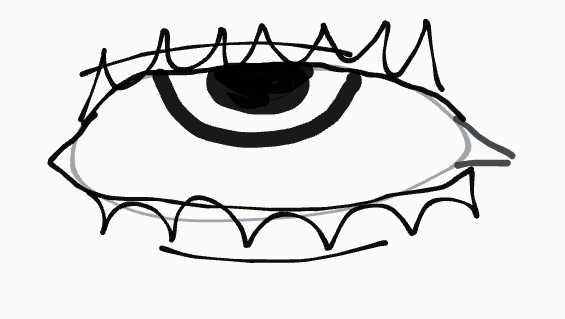How to Draw: Feathered Wings
Have you ever wanted to draw feathered wings? It might be a daunting task at first, but as you'll see in this article, it isn't as hard as it seems. Today, I'll be going over some tips and tricks to help you draw wings.
The Anatomy of the Wing
Wing anatomy can be broken down into three main points. I like to call these points the connection point, the main joint, and the wing peak. In the sketch process, these points are connected to a zigzag line. The light blue square next to the connection point represents the figure's body.
The connection point connects the wing to the figure (hence the name). The main joint is responsible for the posture of the wing, depending on how it's bent. The wing peak opens and closes the span of the wings.
The zigzag line connecting the points is no ordinary zigzag line, there's a pattern it follows: Down, Up, Down. Following this pattern will get your wing looking more realistic, as it's the same way birds wings bend.
Along with the three main points in the wing, there is a certain way the feathers fall over the wing. The longest and largest feathers are in the area below the wing peak and the main joint, while the shortest ones are near the connection point. These sections of feathers can be sketched using curving triangles.
These are the basics of wing anatomy. If you experiment with the position of the line and the joints, you'll find wings are much easier to position than you may have thought. Don't be afraid to overlap the folds of the wing for maximum perspective and realism.
Drawing and Shading Feathers
Before we wrap up, you may be wondering how to draw feathers, so I'll go over that briefly, too.
Large feathers are typically a very long, curved U shape. Short feathers can be similar to fur: jagged shapes that vary in length and texture. There's really no wrong way to draw feathers, as they are rather simple, but I recommend viewing some references if you're having trouble.
Shading feathers is similar to shading fur or hair; they can be very reflective, and due to how thin they are, light may pass through them if bright enough (you can see this in the thumbnail image) The best way to learn shading wings is to look at references and experiment. Here are some quick examples of shading before we go.
Conclusion
And that ends this TIPS article! I hope these tricks help you as you draw feathered wings. If you don't get it at first, remember all good things take time, keep practicing. Until next time.




















댓글